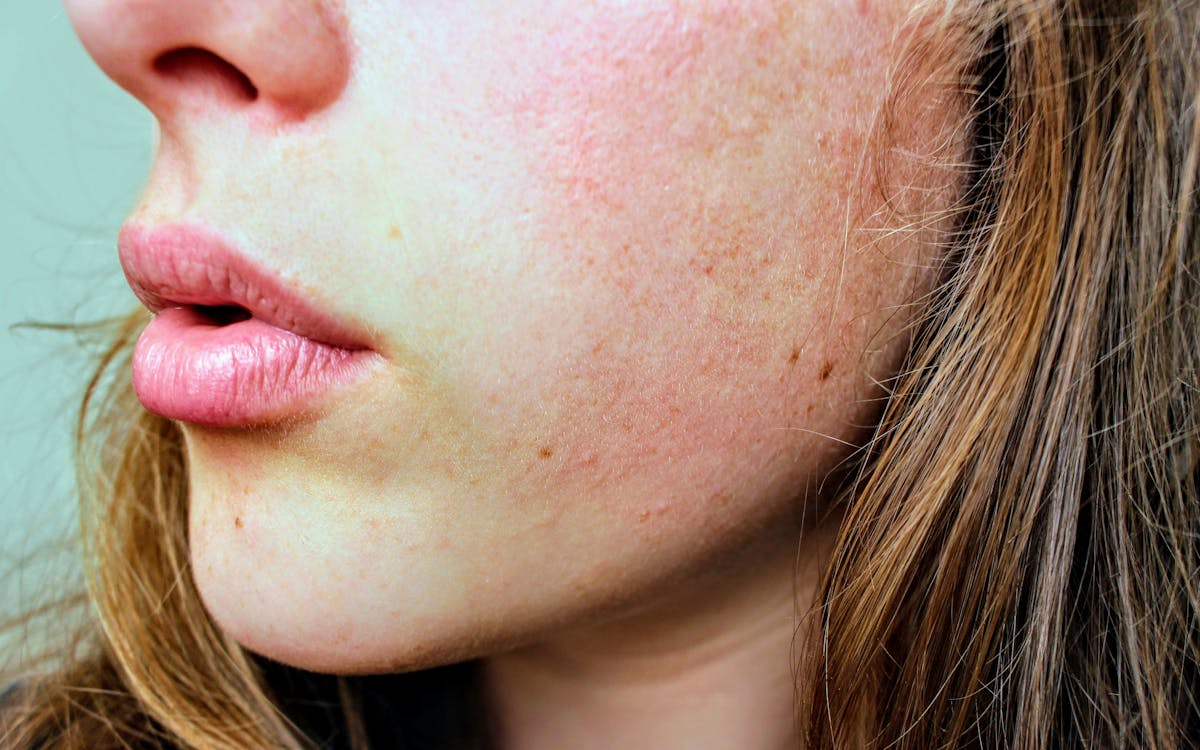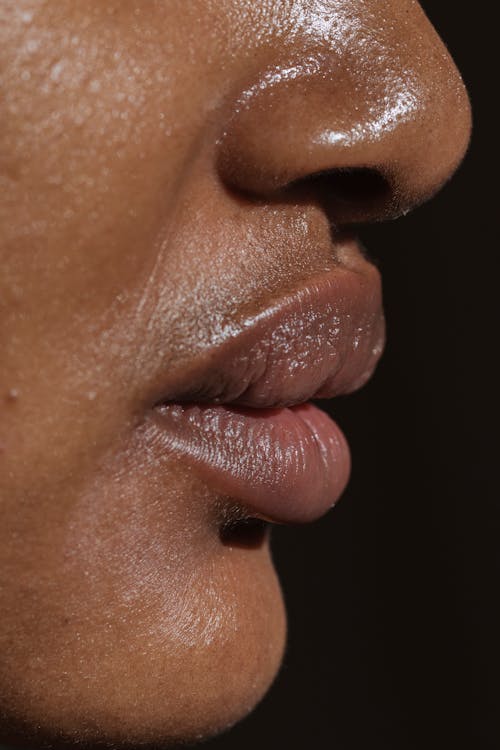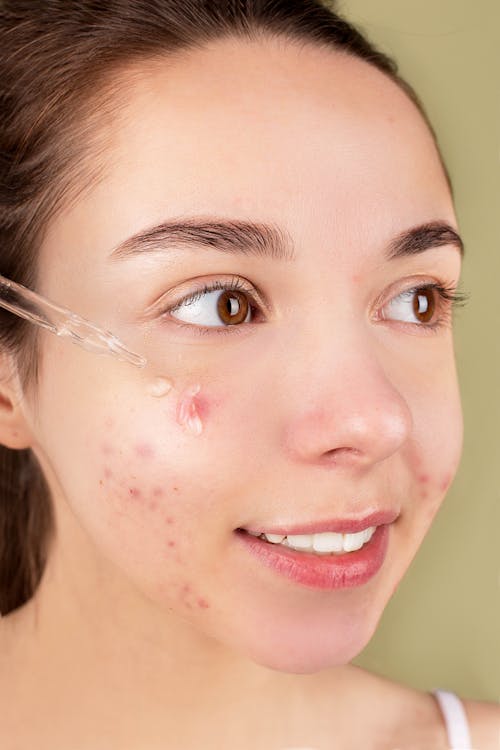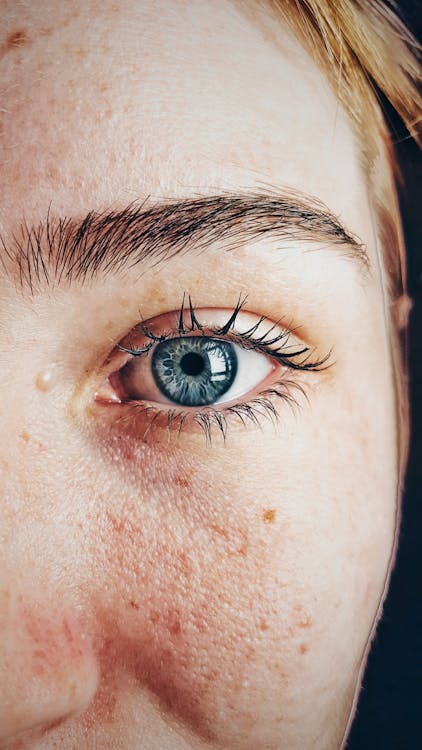

Normal Skin
Normal skin is balanced and doesn’t experience excessive dryness or oiliness. It has small pores and a smooth texture. To take care of normal skin, focus on maintaining its balance:
- Cleanse: Use a gentle cleanser twice a day to remove dirt, oil, and makeup.
- Moisturize: Apply a lightweight, non-greasy moisturizer to keep skin hydrated.
- Protect: Use a broad-spectrum sunscreen with an SPF of at least 30 to protect skin from sun damage.

Dry skin
Dry skin lacks moisture and can feel tight and rough. It may have a dull, flaky appearance. To take care of dry skin, focus on hydration:
- Cleanse: Use a gentle, creamy cleanser to avoid stripping skin of natural oils.
- Moisturize: Apply a rich, emollient moisturizer to hydrate and soothe dry skin.
- Protect: Use a broad-spectrum sunscreen with an SPF of at least 30 to protect skin from further dryness and sun damage.

Oily Skin
Oily skin produces excess sebum, leading to a shiny, greasy appearance. It may be prone to acne and enlarged pores. To take care of oily skin, focus on regulating oil production:
- Cleanse: Use a gentle, oil-free cleanser twice a day to remove excess oil and impurities.
- Tone: Apply a toner with salicylic acid to help control oil and prevent breakouts.
- Moisturize: Use a lightweight, oil-free moisturizer to keep skin hydrated without adding excess oil.
- Protect: Use a broad-spectrum sunscreen with an SPF of at least 30 to protect skin from sun damage.

Combination Skin
Combination skin is a mix of oily and dry areas, with an oily T-zone (forehead, nose, and chin) and dry cheeks. To take care of combination skin, focus on balancing its different needs:
- Cleanse: Use a gentle, pH-balanced cleanser twice a day to avoid stripping skin of natural oils.
- Moisturize: Apply a lightweight, non-greasy moisturizer to the dry areas of your face and a mattifying moisturizer to the oily T-zone.
- Protect: Use a broad-spectrum sunscreen with an SPF of at least 30 to protect skin from sun damage.

Sensitive Skin
Sensitive skin is easily irritated and may react to certain ingredients or environmental factors. It may have a red, itchy, or flaky appearance. To take care of sensitive skin, focus on gentle, soothing products:
- Cleanse: Use a fragrance-free, non-foaming cleanser to avoid irritation.
- Moisturize: Apply a fragrance-free, hypoallergenic moisturizer to soothe and hydrate sensitive skin.
- Protect: Use a broad-spectrum sunscreen with an SPF of at least 30 that’s specifically formulated for sensitive skin.
- Avoid irritants: Stay away from products with harsh ingredients like alcohol, fragrances, and dyes, and avoid hot water when washing your face.
- Be cautious with new products: Always patch test new products and introduce them slowly to your routine to avoid irritation.

Aging Skin
Aging skin loses elasticity and firmness, leading to wrinkles and fine lines. To take care of aging skin, focus on hydration and nourishment:
- Cleanse: Use a gentle, anti-aging cleanser to remove dirt and impurities without stripping skin of natural oils.
- Moisturize: Apply a rich, anti-aging moisturizer with ingredients like retinol, hyaluronic acid, and antioxidants to hydrate and nourish aging skin.
- Protect: Use a broad-spectrum sunscreen with an SPF of at least 30 to protect skin from further damage.

Acne-Prone Skin
Acne-prone skin is prone to breakouts and may have clogged pores and inflammation. To take care of acne-prone skin, focus on gentle exfoliation and controlling oil production:
- Cleanse: Use a gentle, non-comedogenic cleanser twice a day to remove dirt, oil, and bacteria without causing further irritation.
- Exfoliate: Use a salicylic acid exfoliant once or twice a week to gently unclog pores and prevent breakouts.
- Treat: Apply a spot treatment with benzoyl peroxide or tea tree oil to active breakouts.
- Moisturize: Use a lightweight, oil-free moisturizer to keep skin hydrated without adding excess oil.
- Protect: Use a broad-spectrum sunscreen with an SPF of at least 30 to protect skin from sun damage.

Rosacea-Prone Skin
Rosacea-prone skin is prone to redness, inflammation, and sensitivity. To take care of rosacea-prone skin, focus on soothing and calming products:
- Cleanse: Use a fragrance-free, non-foaming cleanser to avoid irritation.
- Moisturize: Apply a fragrance-free, hypoallergenic moisturizer with ingredients like aloe vera, chamomile, or green tea to soothe and calm rosacea-prone skin.
- Protect: Use a physical sunscreen with an SPF of at least 30 that’s specifically formulated for sensitive skin.

Hyperpigmented Skin
Hyperpigmented skin has areas of dark spots or patches, usually caused by sun damage or hormonal changes. To take care of hyperpigmented skin, focus on brightening and evening out skin tone:
- Cleanse: Use a gentle, non-comedogenic cleanser to avoid further irritation.
- Treat: Apply a brightening serum with ingredients like vitamin C, niacinamide, or licorice extract to fade hyperpigmentation and even out skin tone.
- Moisturize: Use a lightweight, non-greasy moisturizer to keep skin hydrated.
- Protect: Use a broad-spectrum sunscreen with an SPF of at least 30 to prevent further hyperpigmentation.
Remember to listen to your skin and adjust your routine as needed, and to always patch test new products and consult a dermatologist if you have any concerns about your skin. With the right care and attention, you can achieve glowing skin no matter your skin type and with consistent, targeted care, you can keep your skin healthy and balanced.

